Whether you call them sweaters, jumpers, pullovers, or woolies everyone loves the cozy embrace of stylish knitwear. We’re proud to present our ultimate guide to understanding what makes great sweaters, as well as finding the perfect pullover sweaters that will help you keep the chill at bay.
Don’t Sweat It! Watch Our Sweater Video Guide
Perhaps the cold weather has caught you off guard, and you need to get your knitwear knowledge right now? Well, look no further than Raphael’s video guide to the perfect men’s sweaters:
What is a Sweater?
A sweater, or a jumper, or a pullover depending on where you are from, is a knitted garment that covers the upper body and arms. It can cover parts of the neck as well, depending on the cut. Sweaters can be defined by many characteristics, most notably the cut or style, the pattern, or the knit.
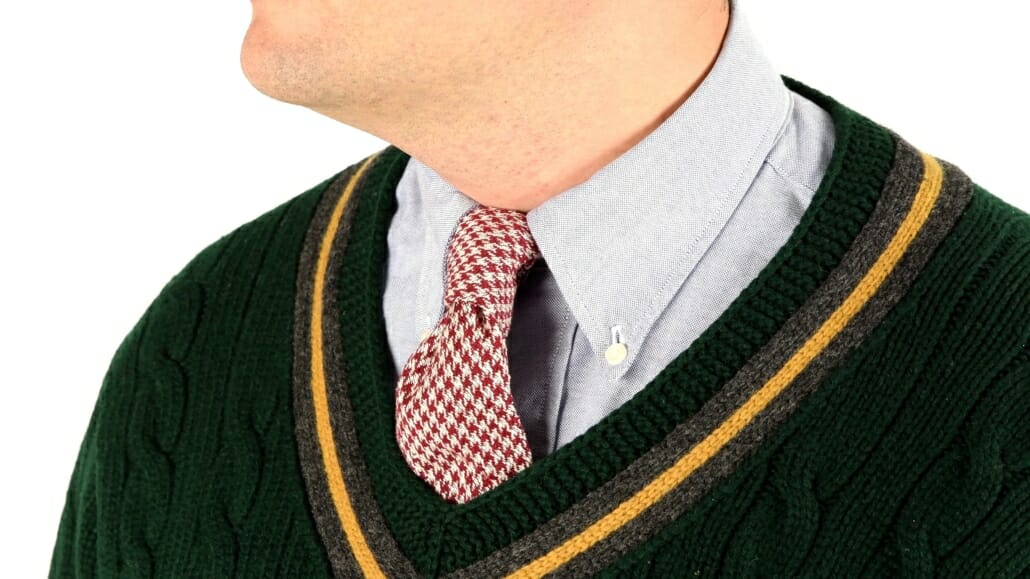
Sweaters actually have a wider range of functions than you might think. Depending on the style, a sweater can help transition between seasons, add texture and layers to your outfits, and will keep you warm in cold weather. In this guide, we will explore how the sweater evolved to be the classic wardrobe staple it is today, and how to find a good one. Everyone should own a few!
What Makes a Sweater “Good?”
In our book, a good sweater is worth the price if it possesses high-quality materials, solid construction for better durability, and a timeless cut and pattern. When you’re looking to purchase a sweater, look out for these key hallmarks to get the best reward for your investment.
Quality Sweater Hallmarks
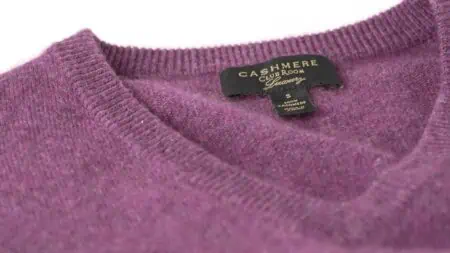
Materials
The best sweaters are constructed of natural materials or a blend of natural materials. This means they will keep you warm without overheating you, and will reduce excessive pilling. So, skip the polyester and nylon, and look for wool, cashmere, or even soft cotton sweaters.
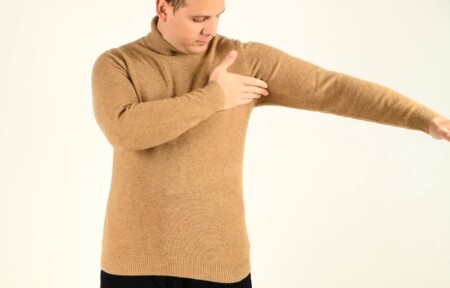
Fit
Sweaters are designed to make you look good, so they need to properly fit in the body, sleeves, shoulder, and waist. After all, you want to retain a maximum level of comfort and style while wearing your sweater.
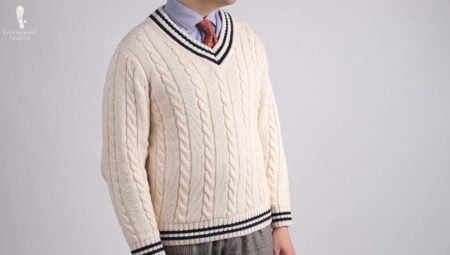
Style
The perfect men’s sweaters will possess a classic cut and style. Pullovers and sweatshirts that feature brand logos will feature a high price but quickly end up in clearance as they aren’t timeless additions to your wardrobe.
Sweater Styles
Part of the fun of sweater shopping is the myriad of different designs available on the marketplace. While many are likely to be designer sweaters simply following the latest styles, there is a handful of classic options that are a guaranteed timeless addition to your closet.
Crew Neck Sweaters
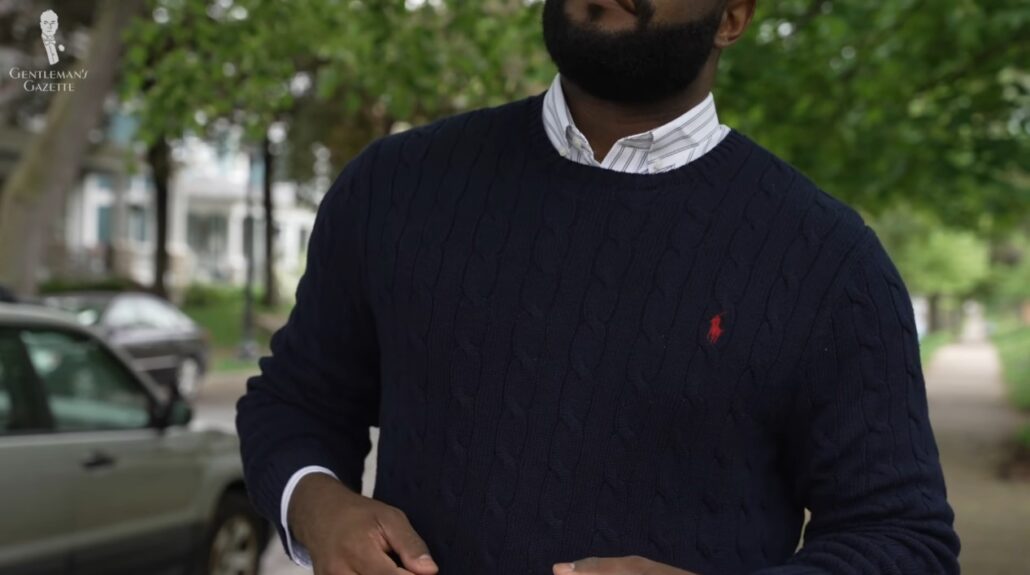
Named after the fisherman who originally wore this cut, a crew neck is a pullover sweater with a rounded, close-fitting neck. Today, they are the most popular sweater style. It can be worn over a button-up shirt that bears a collar, but there is not enough room to wear a tie as well. For this reason, you might want to consider a button-down shirt collar, such as an OCBD, as this will sit nicely under the rounded collar of a crew neck sweater.
V-Neck Sweaters
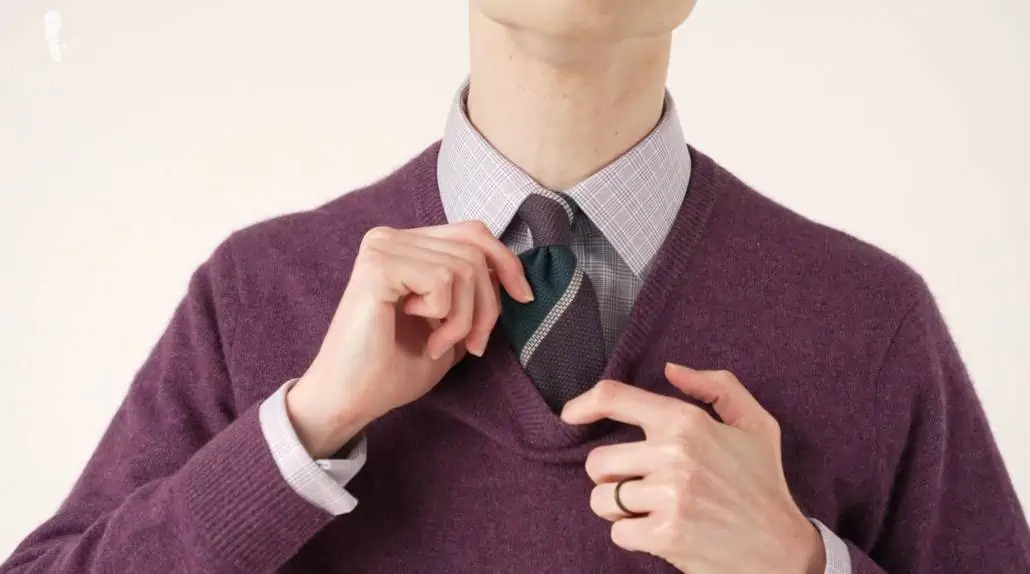
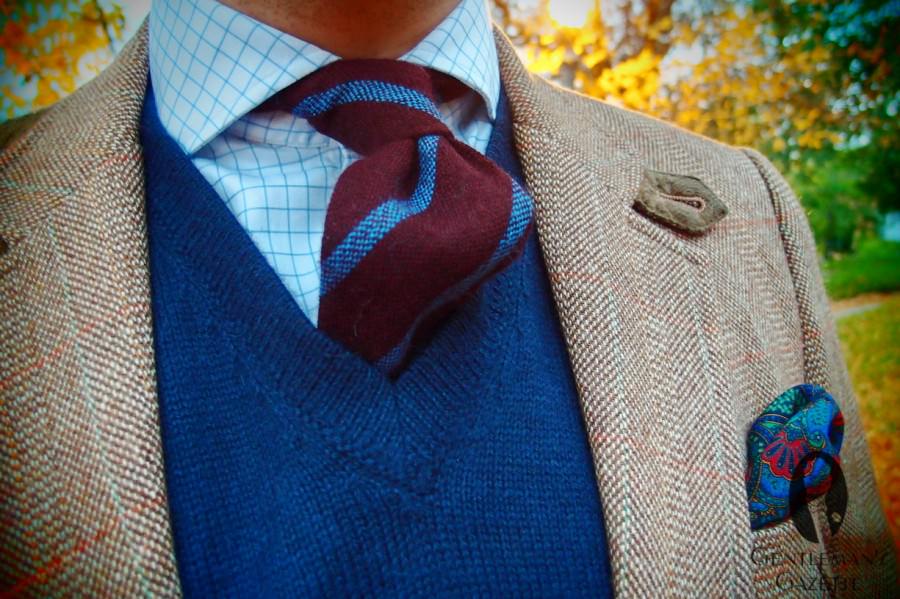
The v-neck is essentially the same as a crew neck, but the neckline is cut into a v-shape. Due to the cut, this sweater is best worn with a collared dress shirt and a tie or an ascot, making it perfect for a multitude of situations from office-appropriate attire to a casual weekend ensemble.
Tennis Sweaters
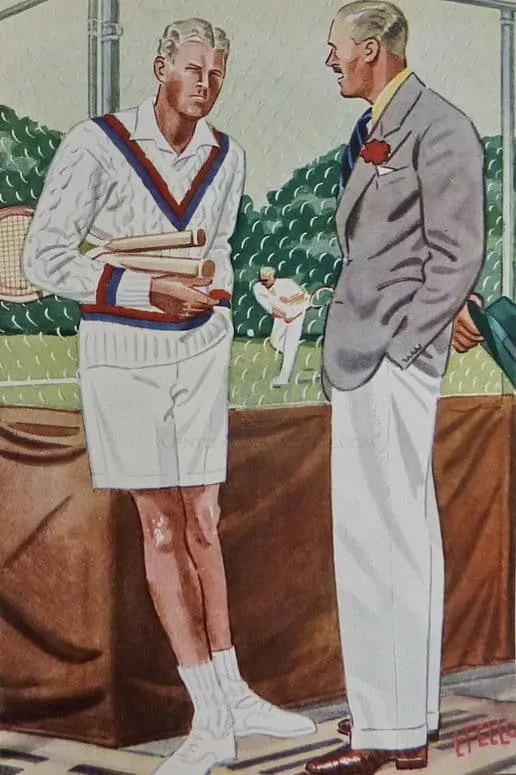
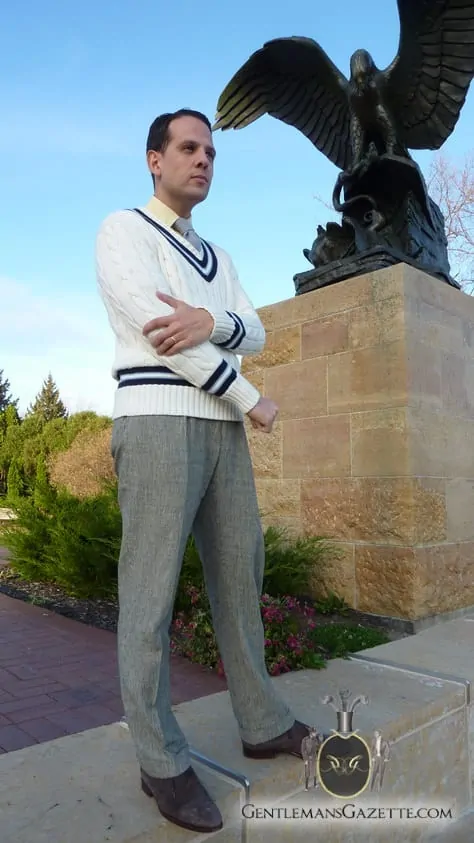
Tennis sweaters are as classic as they come, and they have a deep v-neck with a brightly colored trim around the neckline and possibly the hem and cuffs. Originally they were almost exclusively cable-knit in white or cream, but they now come in a variety of colors and finishes.
Shawl Collar Sweaters
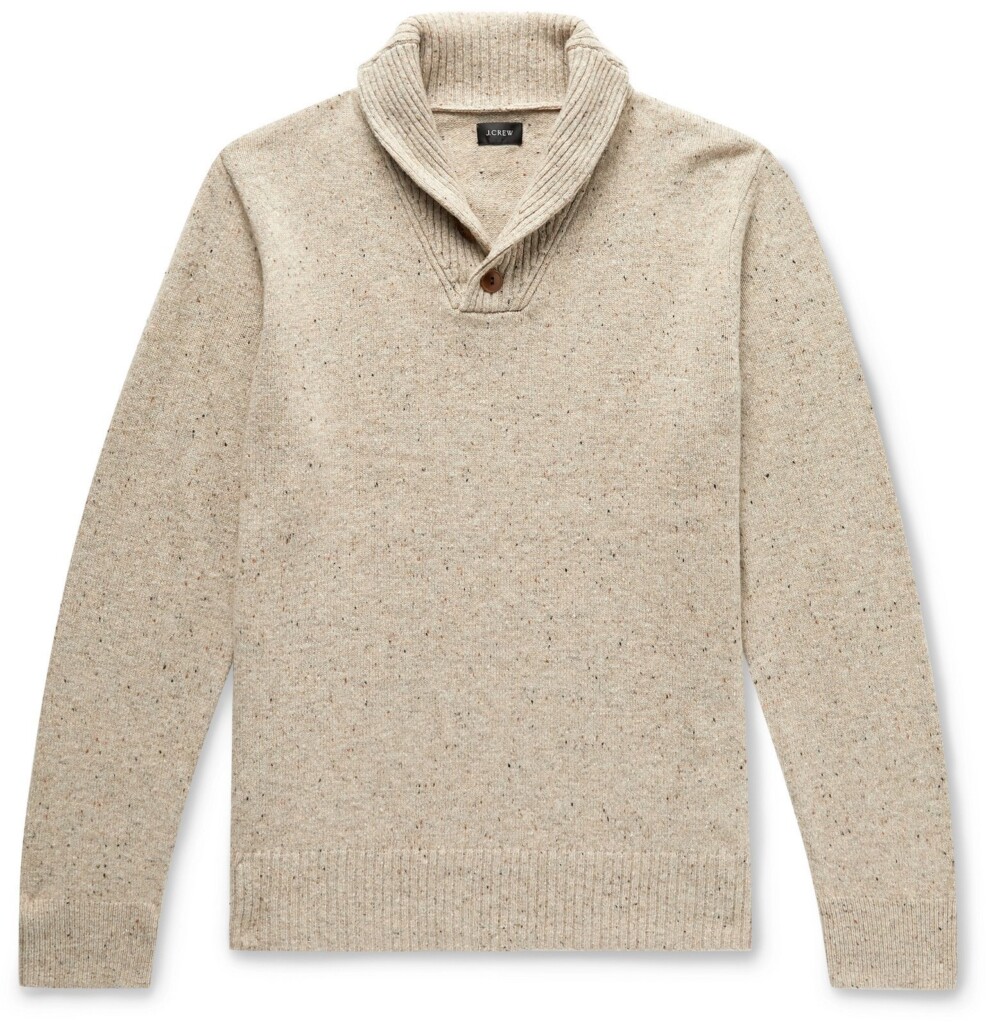
The modern shawl collar sweater is descended from military or “infantry” sweaters given to American GIs. It features a rolled neck that is crossed or uncrossed in a v-neck shape; some versions offer 1-3 buttons or toggles that can be either functional or just for looks.
Zip-Up Sweaters
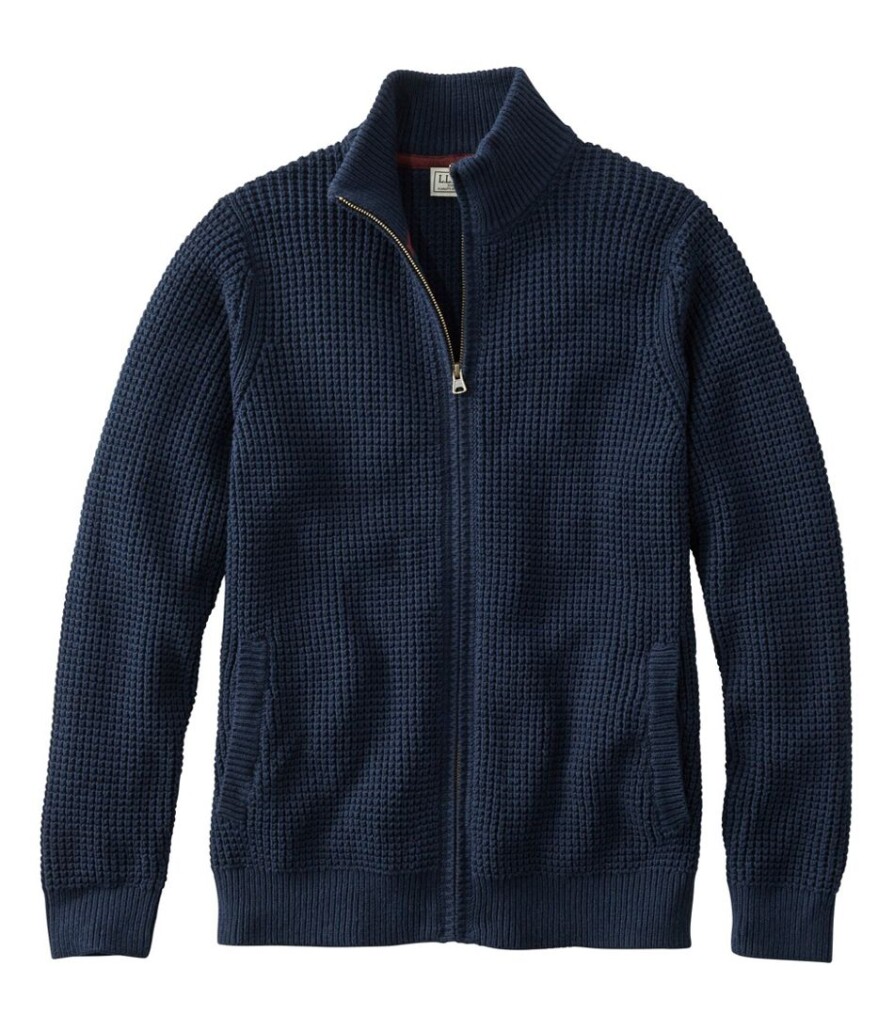
Zip-up or full-zip sweaters are closer to cardigans than traditional sweaters. This is because they feature a long zipper closure that runs the length of the garment, allowing you to put the sweater on like a jacket, rather than pulling it over your head. The downside of many zip-up sweaters is the zip being relatively inflexible next to the softer knitwear. This can lead to an unusual bumpy quality along the zipper, which may spoil the lines of your outfit.
Half-Zip Sweaters (AKA Quarter-Zip)
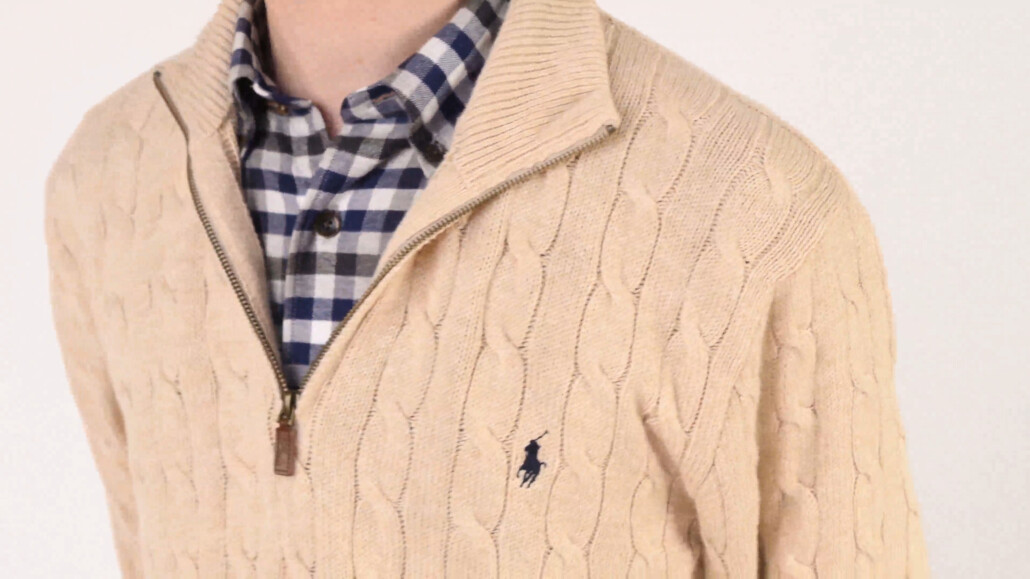
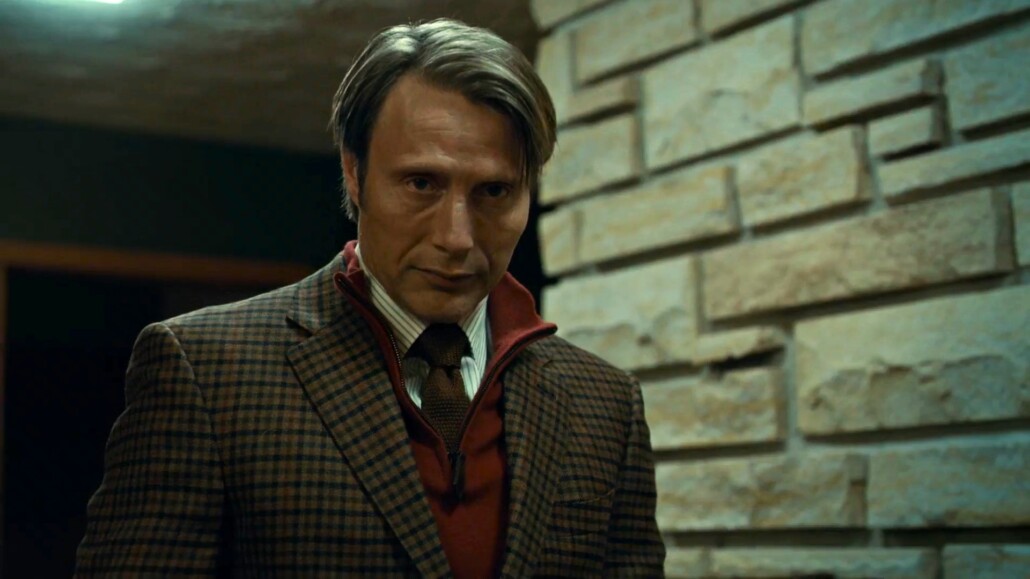
This modern style has a high collar that can be opened and closed with a short zipper, though it is typically worn open. While zippers are often used for more technical clothing, it is possible to find some iterations of a half-zip sweater that resemble shawl collar sweaters. This style can also act similarly to a v-neck sweater, in that you can wear a tie or ascot underneath, with the neckline accentuating the look.
Commando Sweaters
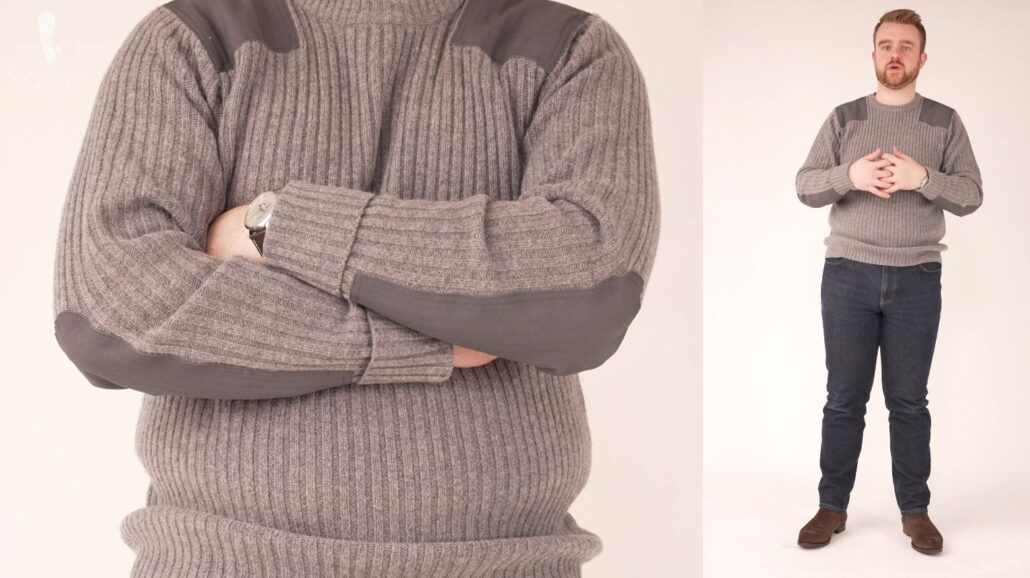
Otherwise known as military sweaters or even “wooly pully” sweaters, this close-fitting crewneck sweater features reinforced shoulder epaulets and elbow patches, much like its military ancestor.
Turtleneck Sweaters
Also known as a roll neck, mock neck, or polo neck sweater, some or all of the neck is covered by this sweater. They can be worn on their own with a pair of khaki pants or blue jeans, or they can be worn on casual Fridays to the office under a blazer.
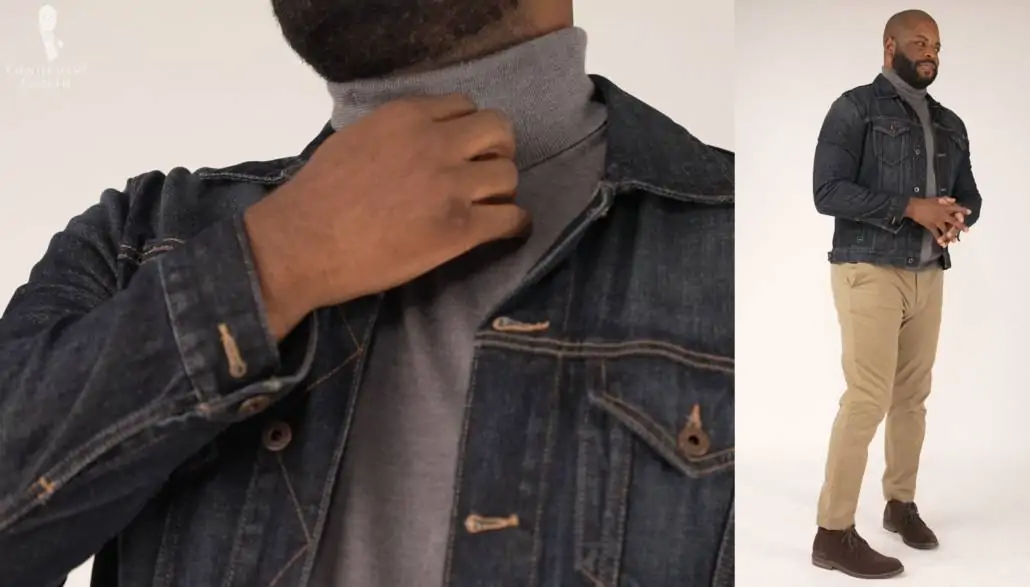
Tempted By Turtlenecks?
Cardigan Sweaters
A cardigan opens down the front like a shirt or jacket and is closed by buttons or toggles. The most common version is single-breasted, but some retailers now offer double-breasted versions that look like a cross between a peacoat and a cardigan.
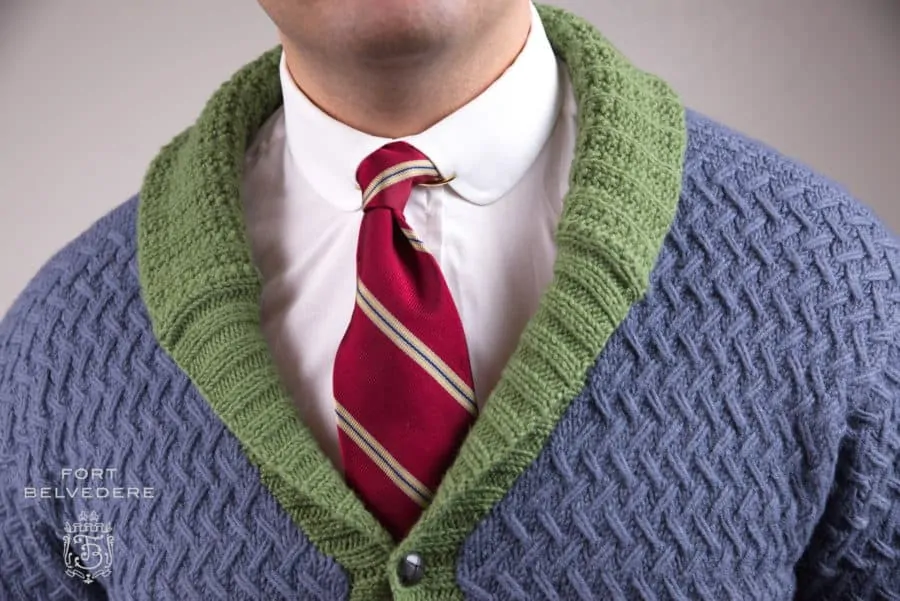
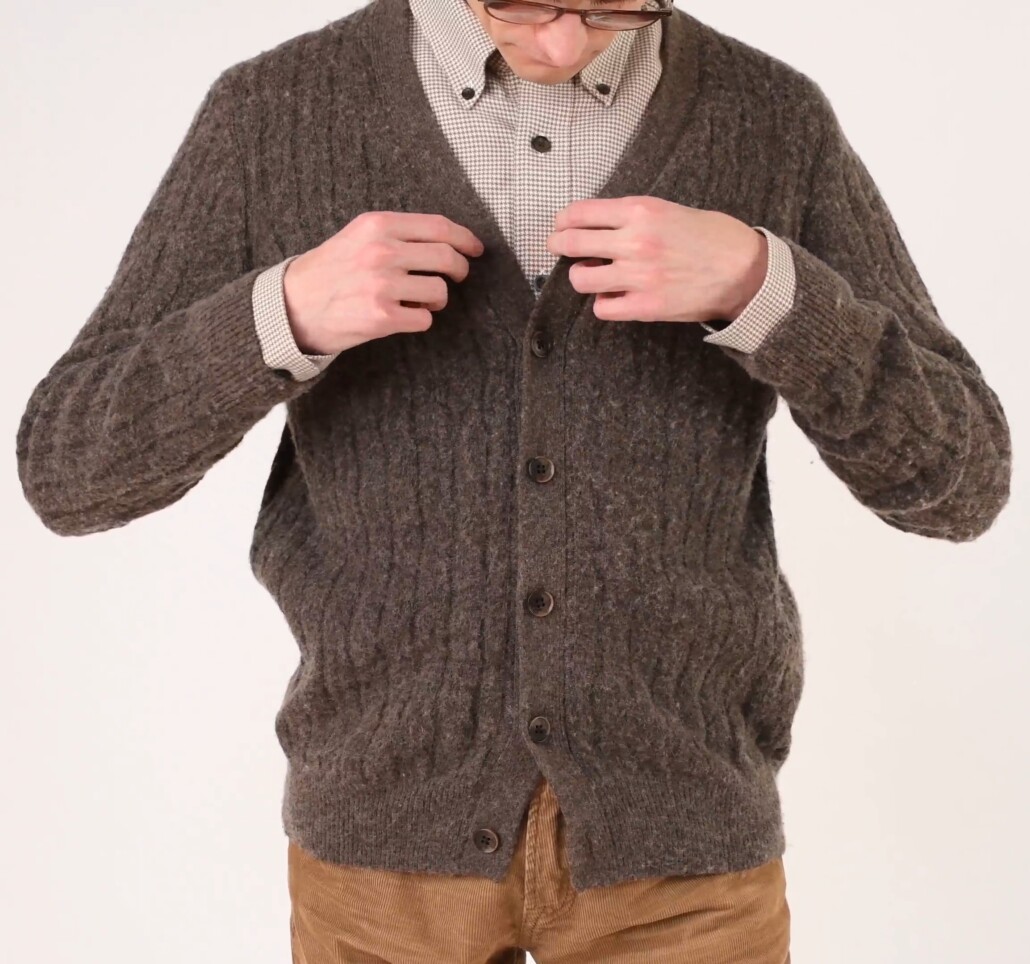
Curious About Cardigans?
History of the Sweater
Like many garments, the history of the sweater is mostly a functional one. The most famous historical wearers of sweaters were fishermen, who needed warm and hard-wearing garments to protect themselves from the elements. As far back as the 15th century, fisherman’s wives from Guernsey in the Channel Islands between Britain and France knitted “guernseys” with tightly spun and knit wool. Because natural sheep’s wool was used, it contained a high amount of lanolin that worked at repelling the sea spray.
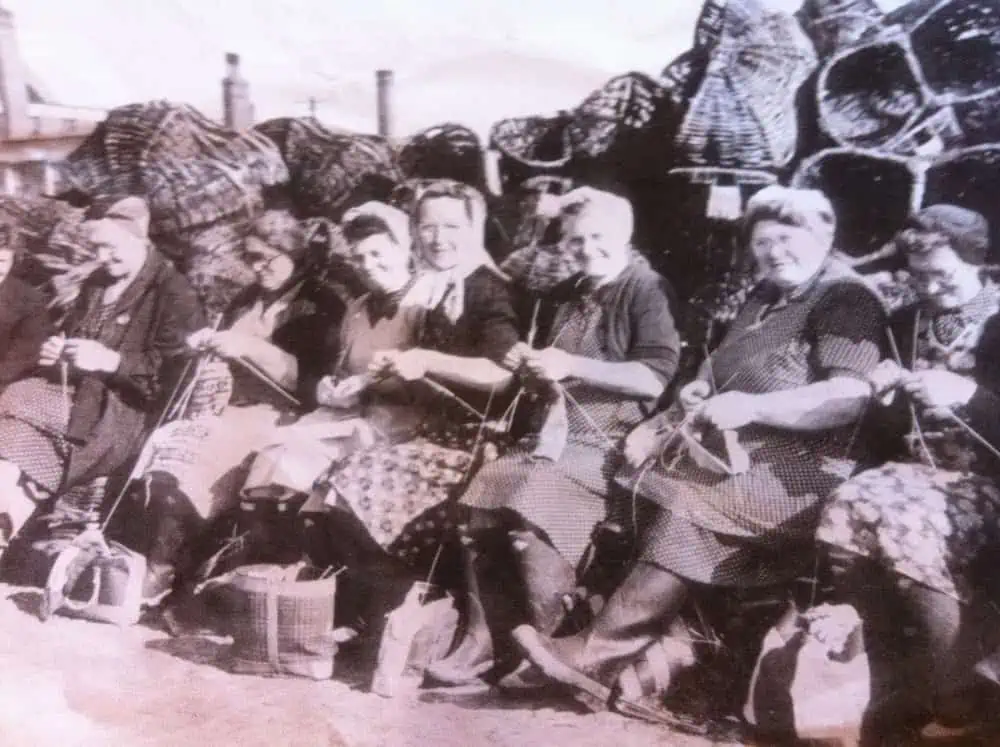
As trade developed, the guernsey was adopted and modified by coastal communities across the British Isles and the North Sea. Called a “gansey” by other communities, these sweaters were distinctively patterned across the yoke with a stitch local to the wearer’s village. The neck was finished with a short collar and the cuffs were structured so that they could be easily re-knitted. Until the turn of the 20th century, ganseys were hand-knitted by a loved one and were still worn almost exclusively as a working man’s garment, though many men owned a finer gansey for Sundays and holidays.
In the mid-19th century, the gansey was adopted by the Royal British Navy, and they are still part of the uniform for various members of the British military. At the same time, knitted sweaters from Fair Isle in the Scottish Shetlands were first being traded off the island. Elsewhere in the British Isles, the Aran sweater, which hails from the Aran Islands off the coast of Ireland, was adapted from the gansey sweaters brought by fishermen to help improve the local fishing industry. Local women then altered the sweater and began knitting an all-over pattern.
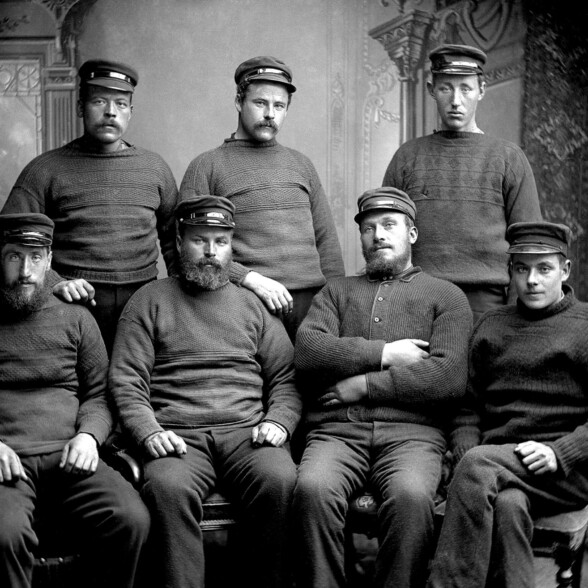
A Working Man’s Clothes
Until the first few decades of the 20th century, the sweater remained a functional garment for certain professions and communities, but that all changed as fashion became a driving force behind clothing choices.
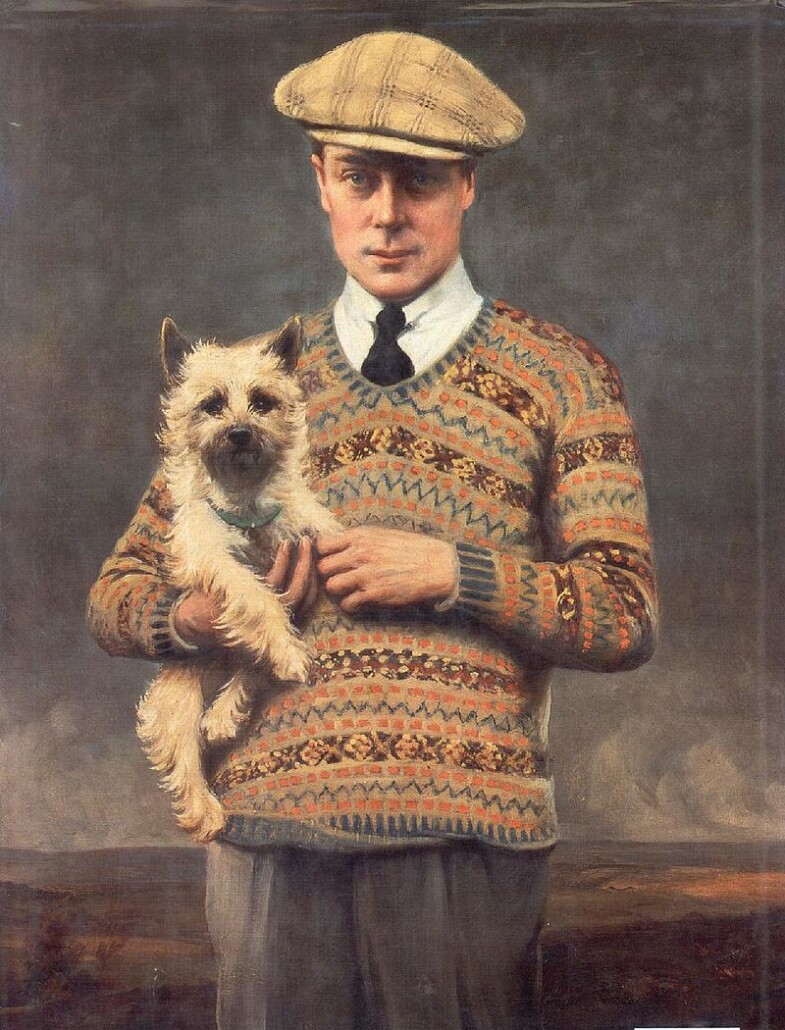
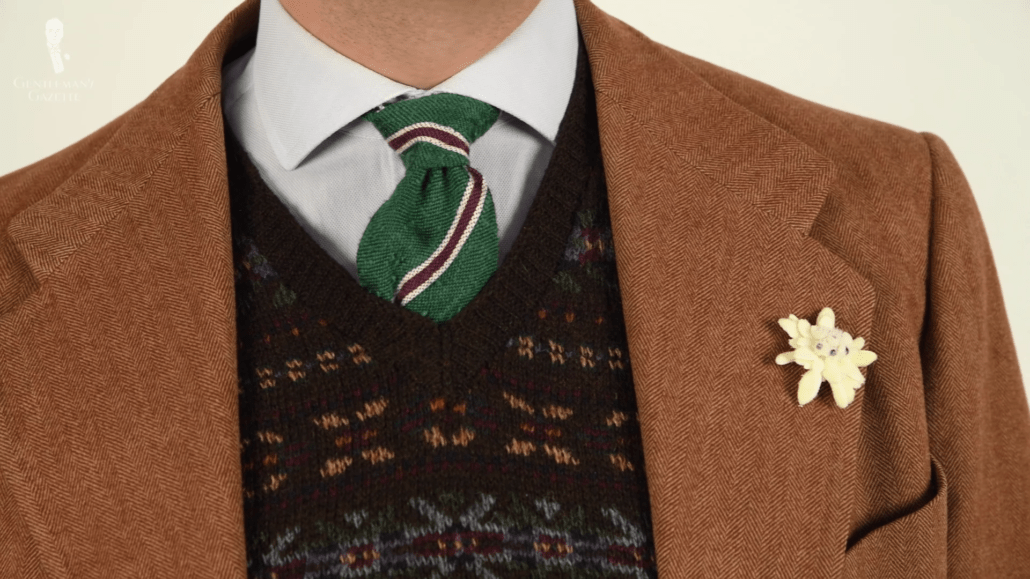
In 1921, the trend-setting Prince of Wales was given a Fair Isle sweater vest which he then wore in public. He was always keen to promote British products, and he would go on to wear Fair Isle sweaters and socks, sparking a craze for the pattern and setting crew neck and v-neck sweaters on a course to become wardrobe staples for all classes of men. In the same decade, the young playwright Noel Coward popularized the turtleneck, which was also known as the polo neck sweater.
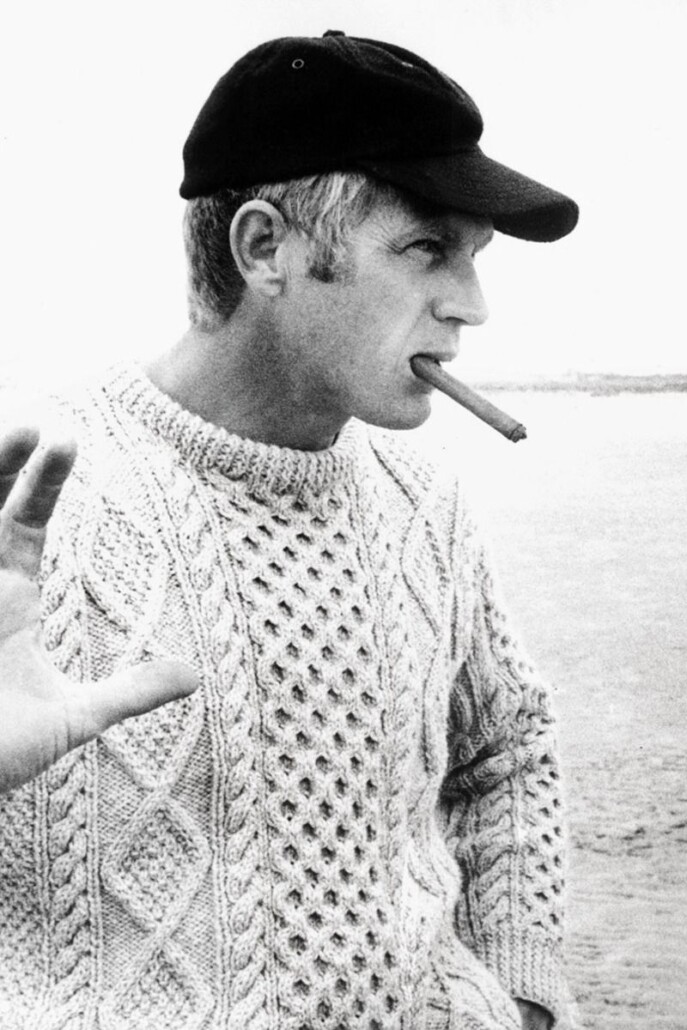
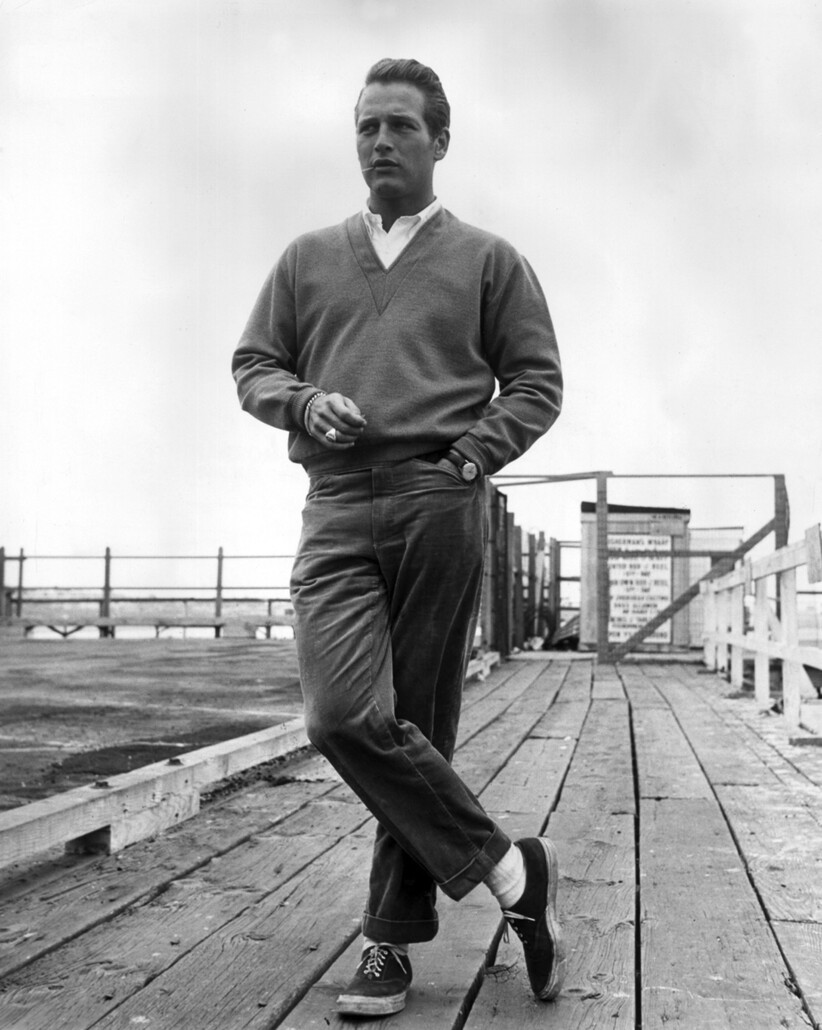

In the 1950s, a Vogue magazine article profiled the Aran sweater, and the resulting demand led Ireland to begin commercial Aran production and exportation worldwide. Between the 1920s and 1970s, film and rock stars like Errol Flynn, Steve McQueen, Cary Grant, Mick Jagger, and Michael Caine wore every variety of sweater and cemented their role as a masculine, casual-cool wardrobe staple for style-conscious men.
Sweater FAQs
How should I store my sweaters?
If put on a hanger, your sweater will gradually drop out of shape with an elongated body and arms, with shoulders and a neckline that no longer fits you. Therefore, store sweaters neatly folded rather than hanging.
How often should I wash my sweaters?
Sweaters shouldn’t need to be washed after every wear, provided you’re wearing other clothing underneath them. Because excess washing can lead to the loosening of the sweater’s fibers, minimize how often you wash them; the less the better!
What’s the best way to wash a sweater?
Wash your sweaters according to the instructions on the label, but make sure to dry them flat and not in the dryer. The weight of the water retained in the sweater will pull the sweater out of shape if you hand it to dry. If in doubt, start “small”, with a gentle detergent, and spot-treat any stains as soon as you’re able.
How do men wear sweaters?
Luckily, there are many ways men can enjoy wearing sweaters. If you enjoy classic style, there are a myriad of options available to you, including dress shirts, flannel or corduroy slacks, with overcoats, and even with jeans and boots. Once you start combining, the rest is a breeze!
What should I do if my sweater has a loose thread?
Don’t pull or clip loose threads, as you might unwind part of your sweater; try to pull the loose thread through the back side of the sweater instead.
What should I wear under a sweater?
A soft cotton shirt always looks good under a sweater. Consider something such as an OCBD shirt, or perhaps a flannel shirt. Don’t wear a visible t-shirt underneath your sweater as it cheapens the look.
What is pilling on a sweater?
Pilling is when loose fibers of your sweater come together to form little bobbles in areas of high wear. This is why you’re likely to find pilling around the areas of the arms, seat, and hemline. If pilling is a persistent issue for you, then take a look at our guide to removing pilling safely.
What Are Sweaters Made From?
The sweater material you choose is most typically dictated by your budget, intended purpose, and functionality. Aim to buy the best quality you can; one rule of thumb is to look at the level of detail a retailer provides about the material. Low-quality examples typically read “100% wool” or merely “cashmere”. If more detail is offered, such as the ply or the specific country of origin of the fiber, the more likely it is to be of higher quality, because the retailer wants to justify the price.
Cashmere
Cashmere is a coveted material for both its softness and warmth, which can be up to 8x warmer than sheep’s wool. However, prices for cashmere sweaters can vary wildly. The reason is that although all cashmere is derived from the fine under hair of the cashmere goat, not all cashmere is alike. The finest quality cashmere is made from the thinnest (usually between 14 and 16.5 microns) and longest fibers (up to 36mm long), usually from Mongolia and China.
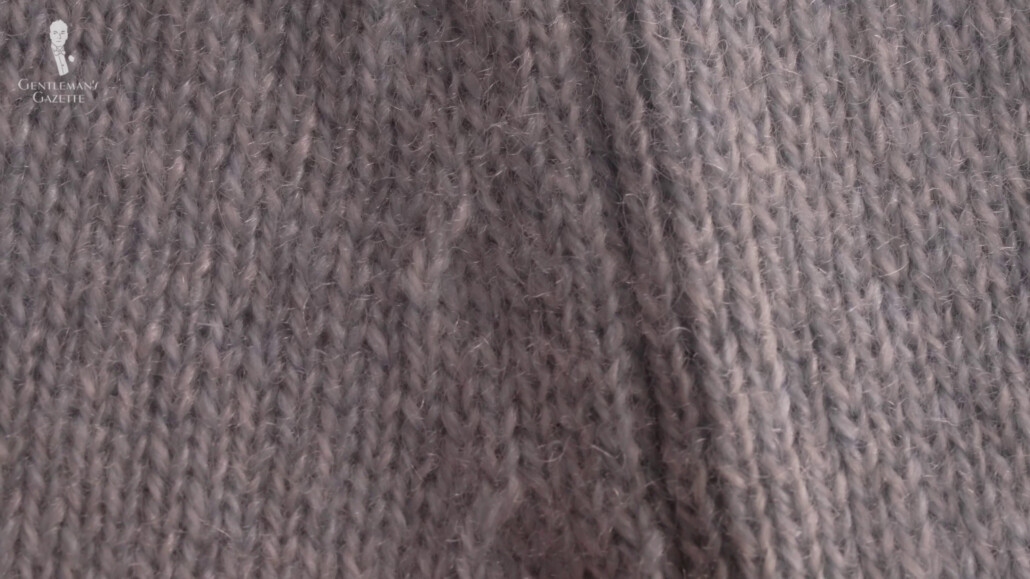
Long, thin cashmere fibers make for the softest, most durable cashmere cardigans and sweaters that will last the longest. Cashmere from Iran (17.5 – 19 microns) and Afghanistan (16.5-18 microns) is less desirable because it is typically rougher and pills more easily.
Shopping for quality cashmere can be hard. Look for ply info if you can find it (the higher the ply the better) and test cashmere to see how it resists stretching. Pull it between your fingers a bit, and if the fabric springs back, it is tightly woven and likely to be of higher quality. If it doesn’t, don’t buy it.
Alpaca
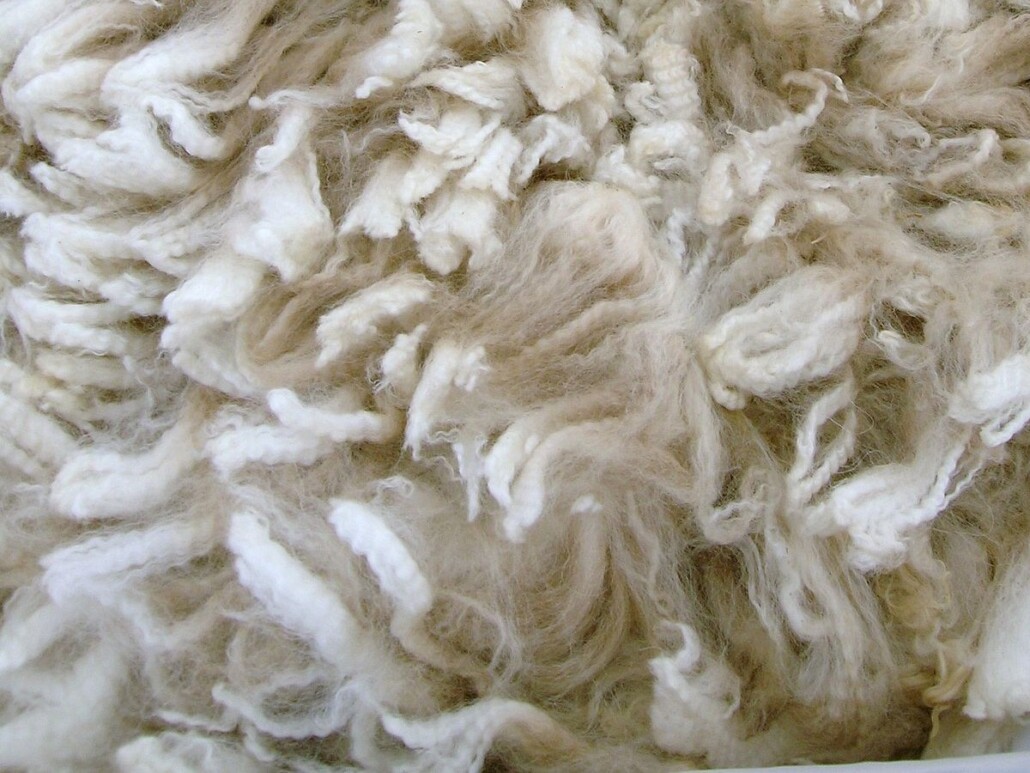
Alpaca is generally considered to be as soft as cashmere, but microscopic air pockets in the fiber make it about 7% warmer than cashmere. At the same time, Alpaca has greater elasticity, is lanolin-free, and is hypo-allergenic. This makes alpaca ideally suited to people allergic to wool or cashmere. It is most likely to be found blended with other natural materials, such as cashmere or merino wool.
Wool
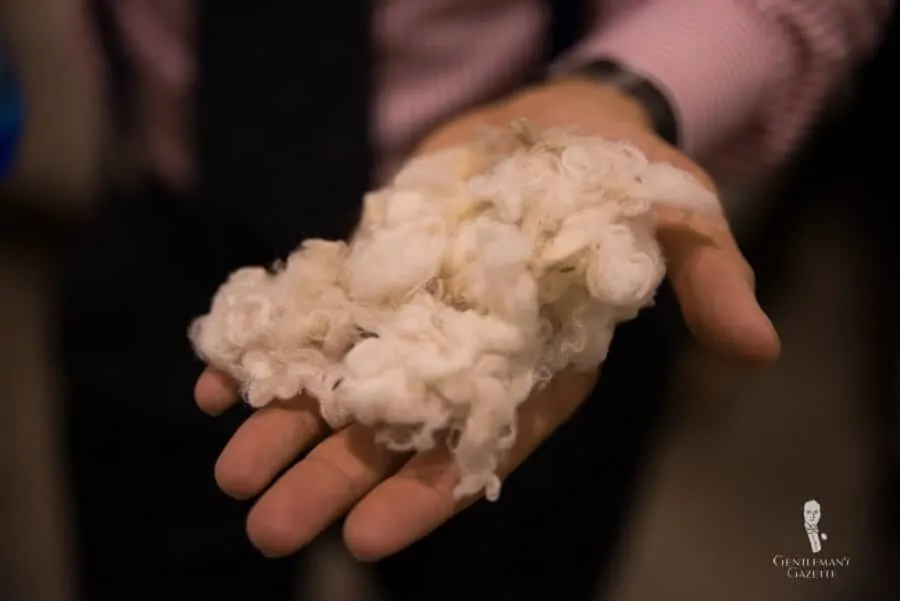
Wool had a bad reputation for being itchy, but it’s only bad wool that will make you itch! With several different varieties available, such as hearty and warm lambswool, or fine and formal merino wool, there are many options to suit your personal style. Consider wearing wool sweaters over button-down shirts and look at all the qualities of wool to find what suits your taste. Fine and thin Merino wool, for example, is excellent for adding extra layers in the office, over shirts, and under jackets.
Cotton and Linen
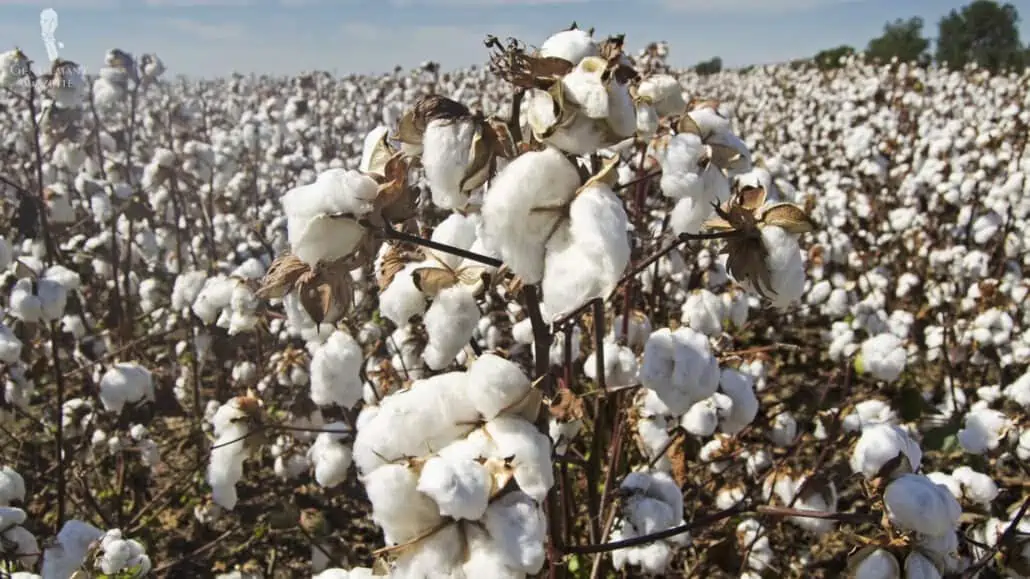

Soft cotton and linen are especially popular in warmer climates or for transitional seasons. These sweaters don’t provide much protection from the cold, but it is a step up compared to just wearing a shirt. Since they’re so light, they can easily be tied around your neck or waist. They are also a fantastic option for travelers since the weight and size of the sweater are light when compared to a thicker wool sweater.
Synthetics and Poly-Blends
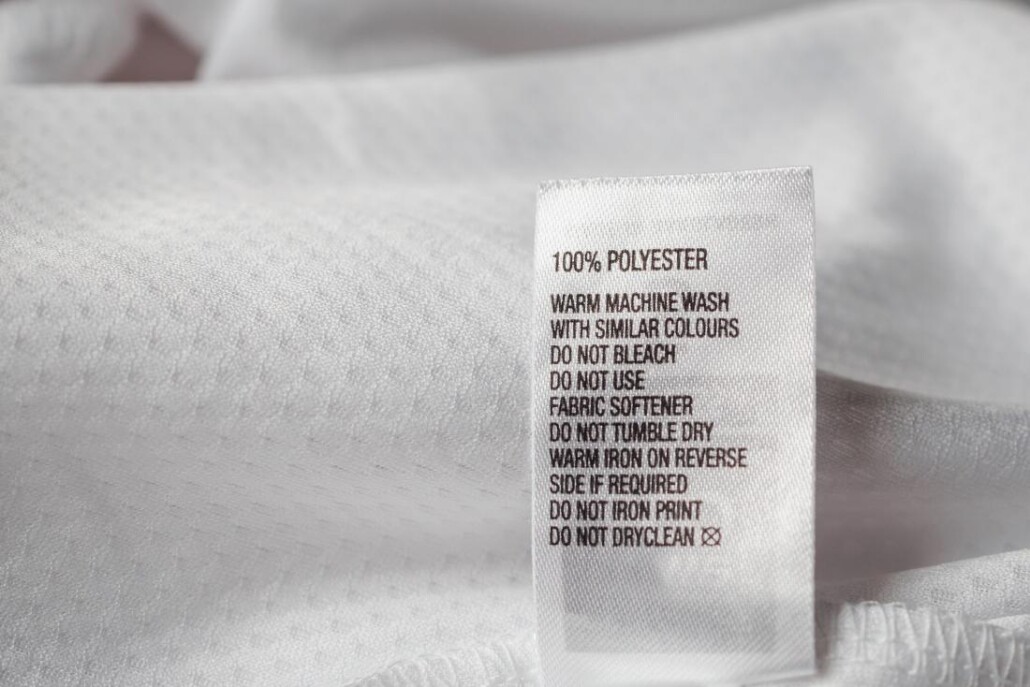
It can be very difficult to avoid synthetics and poly-blends these days such as nylon and polyester. These materials are popular because they stretch easily, feel comfortable on the skin, and cost less than their natural peers. The flip side is that they are rarely designed to last and are often intended to be thrown away after a few years of wear. If you want a good return on your purchase, avoid synthetics wherever possible.
How Should A Sweater Fit?
Like any garment worth wearing, a sweater should fit you properly. Unfortunately, because sweaters are knitted, they are not easy to alter, and finding a good fit off the rack is necessary. Here is how each element should fit:
The Perfect Sweater Fit
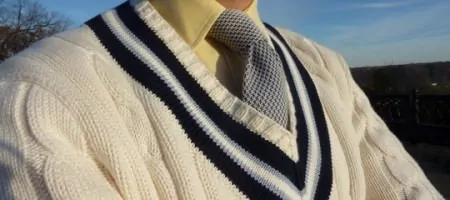
The Collar
Depending on the neckline style you’ve chosen, there will be slightly different fit concerns. Regardless, the collar of your sweater should never feel tight or restrictive, nor make you look sloppy by being too big. Aim for that perfect middle-ground, where it frames your face nicely.
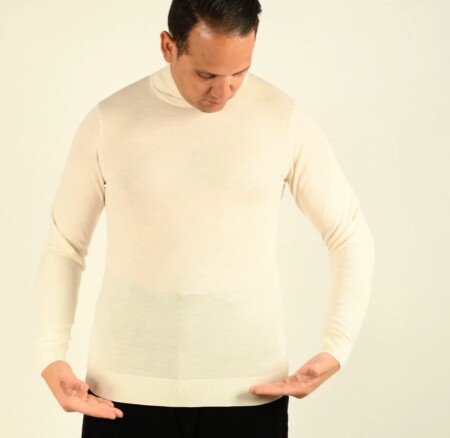
The Hem
The hem of the sweater should overlap your waistband (at a minimum) or fall just below it. If you can see your shirt peeking out from underneath it or your sweater bunches when you sit, it is either too short or too long, respectively.
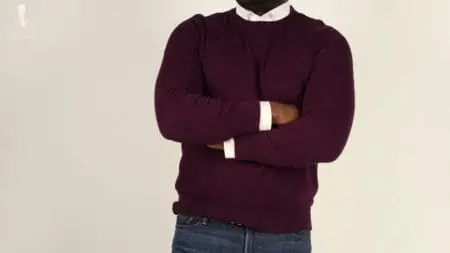
The Shoulder
The shoulder seam should sit directly where the top of your shoulder bone ends. This way, your sweater will drape nicely without dragging your frame down throughout the day. Ultimately, you don’t want to look like you’re wearing someone else’s sweater!

The Sleeves
The sleeves should end at the base of your thumb if worn alone, or a 1/2″ before it if worn with a shirt underneath. You can always turn back the cuff of your sweater to achieve the correct length, and some sweaters are actually designed with this feature in mind.
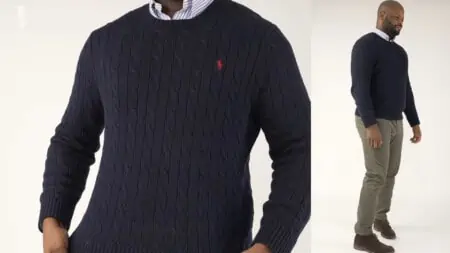
The Body
The body should fit comfortably with a little extra material; if it rolls or billows by the hem it is too large, and likewise if the seams of your shirt show through it is too tight
Sweater Tips and FAQs
Buy A Quality Sweater
Sweaters come in and out of stock based on the seasons and are rarely stocked for more than one season, so it can be difficult to recommend one particular model. The above criteria should give you the tools to look critically at any brand’s sweater offerings and decide if they are worth your money. Typical brands such as Brooks Brothers, J. Crew, and Club Monaco will occasionally offer a 100% natural material sweater, but they are often limited additions that you have to sort out from among the poly-blends.
As always, we are proudly not sponsored, and our list of vendors below showcases a few brands we’ve found that consistently stock high-quality sweaters in natural materials.
Blarney Woolen Mills
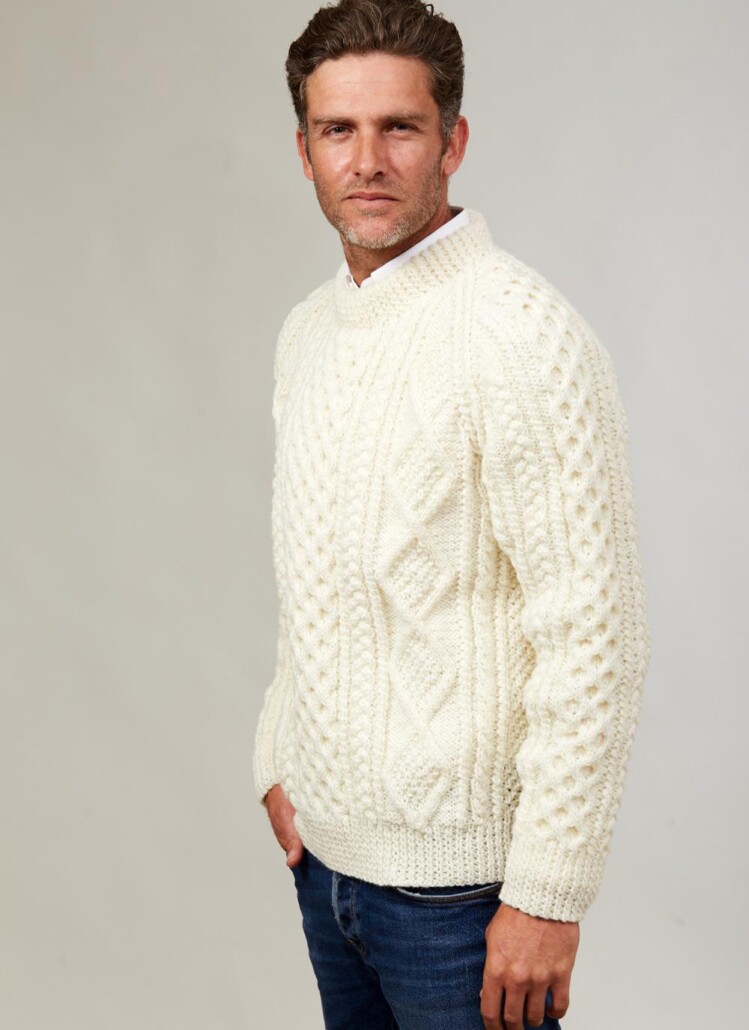
This family-owned Irish company has been making wool-based products since 1750. They offer numerous classically designed sweaters in different kinds of wool, and at reasonable prices to boot. Check out Blarney Woolen Mills’s selection of men’s sweaters. They even offer some hand-knit options, which is extremely rare!
O’Connell’s
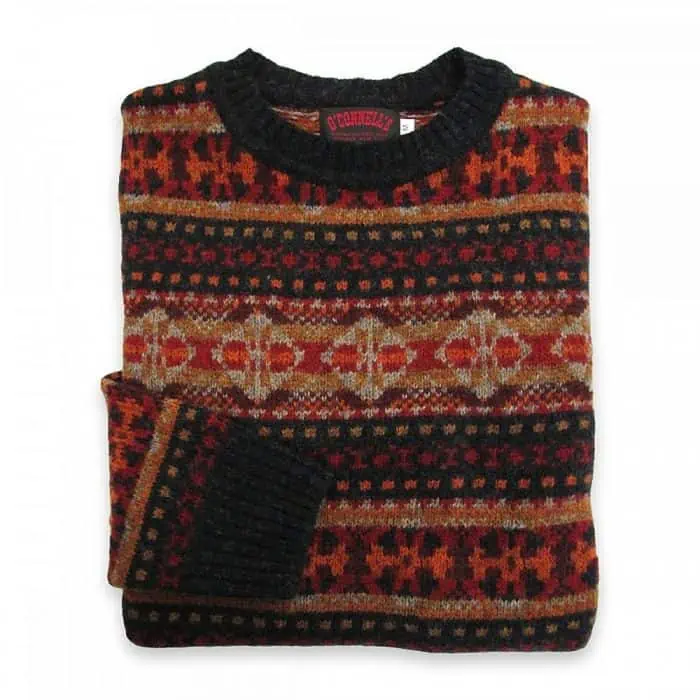
O’Connell’s is similar to Blarney in that they are a family-owned business that produces classic sweaters in natural materials. They offer some spectacular Fair Isle designs in real Shetland wool, which is the original (but famously scratchy) material. In addition, they offer Aran, cashmere, crew neck, v-neck, and cardigan sweaters in a range of other materials. Take a look at O’Connell’s sweater selection here.
Inis Meain
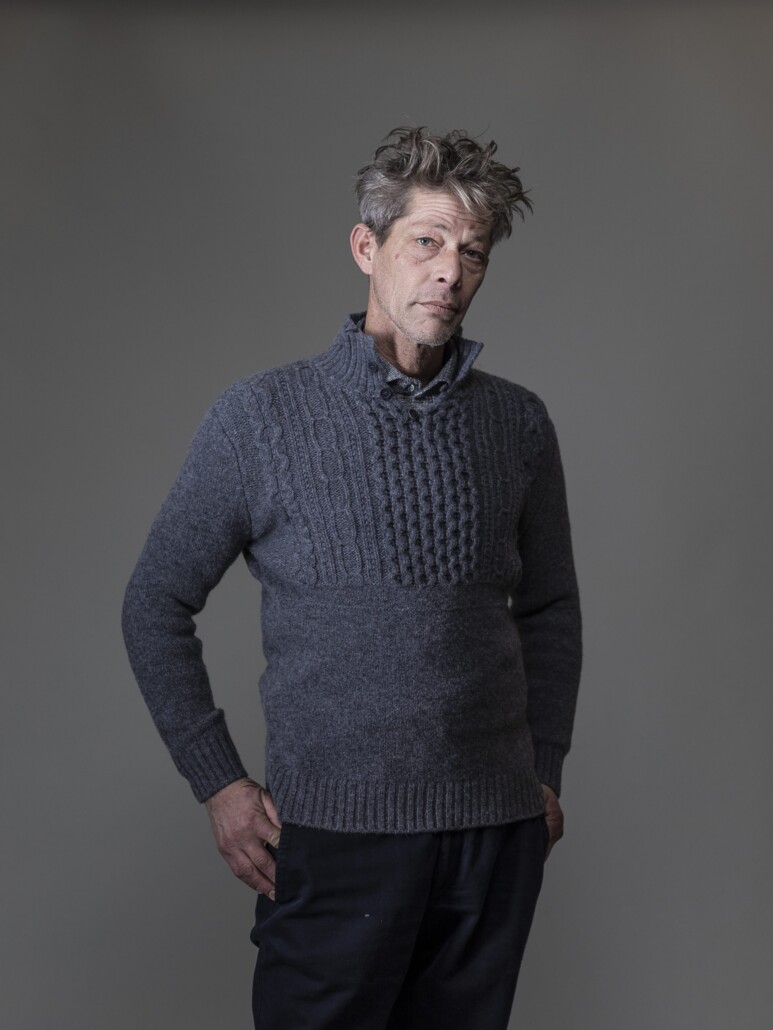
Another Irish company, this sweater maker offers a much smaller selection but they are worth taking a look at for their linen and cotton options. This spectacular bird’s eye crew neck or this replica fisherman’s gansey in linen are both classic and highly unusual. Check out Inis Meain’s full sweater selection for more information.
John Smedley
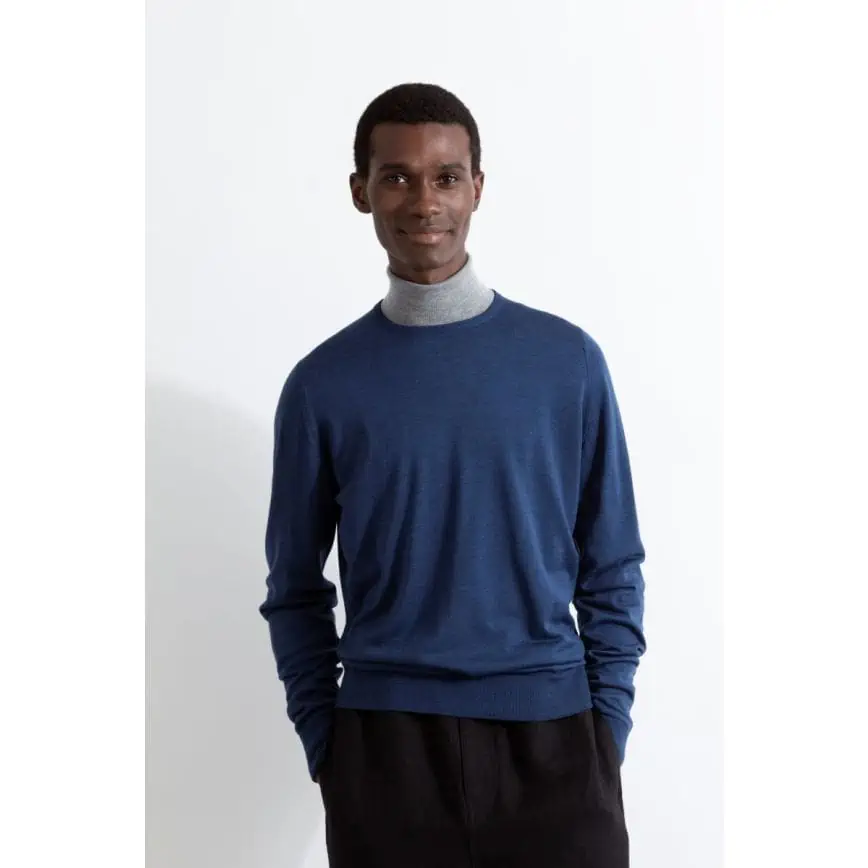
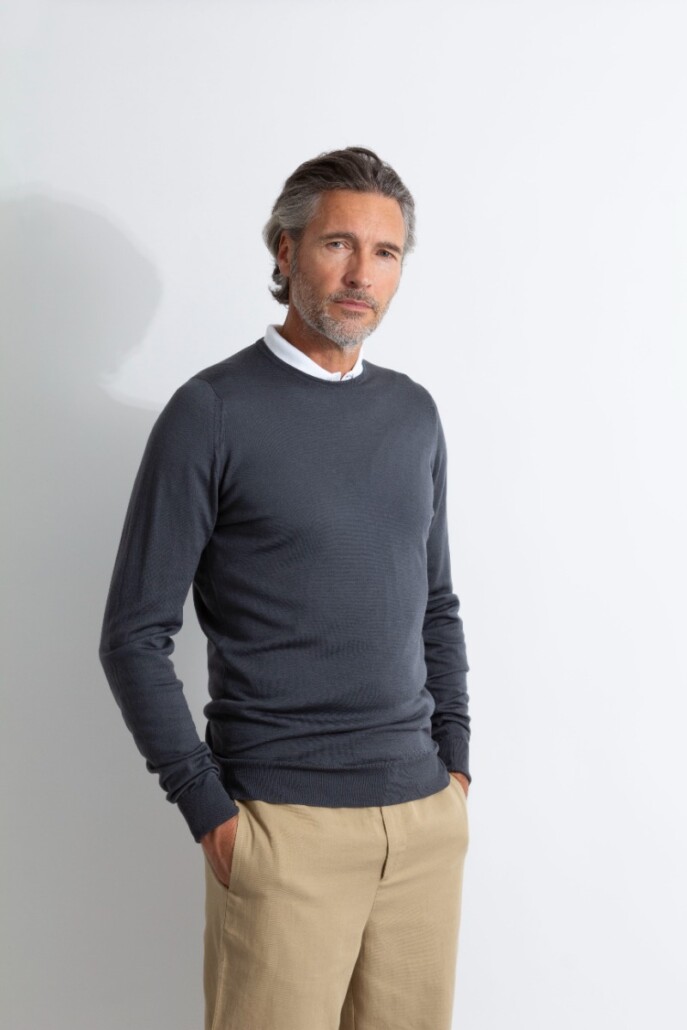
An English manufacturer, John Smedley has been producing high-quality knitwear since 1784. This brand is a great option for investment-level basics that you will wear time and time again, such as solid turtlenecks, crew necks, and v-necks in extra fine merino, cashmere, or Sea Island Cotton, in addition to natural material blends. James Bond even wore their Bobby sweater in Skyfall. Take a look at John Smedley’s extensive sweater selection here.
Vintage or Secondhand
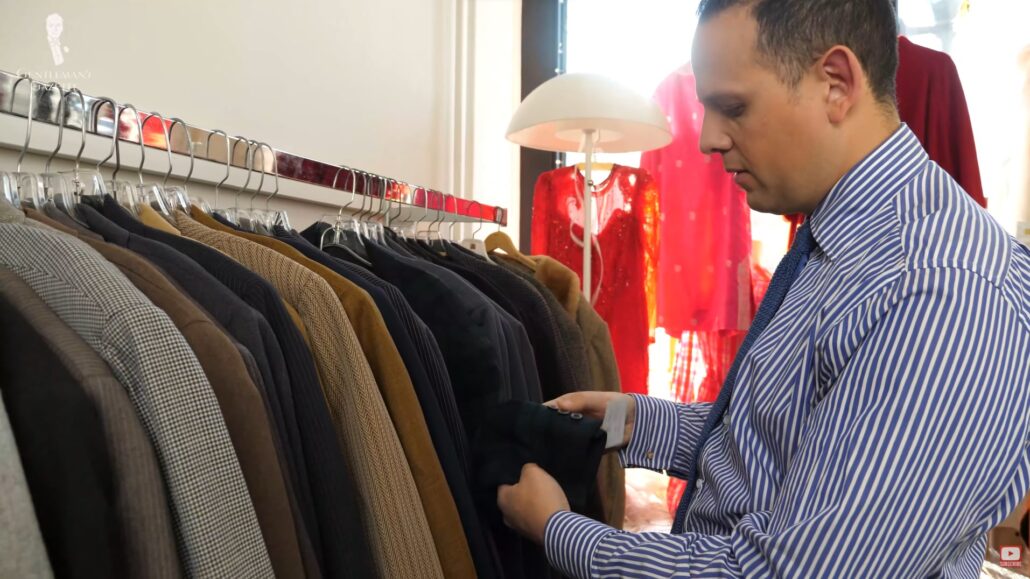
Finally, don’t forget to consider vintage or secondhand sweaters. Older sweaters, especially those in a resaleable condition, are often constructed with better techniques and materials than their more contemporary peers. Ten-year-old Ralph Lauren sweaters, for example, have lasted longer and aged much better than recently purchased RL sweaters in our experience. Furthermore, if you can’t afford new cashmere sweaters, you can often find very high-end brands in barely worn condition on sites like eBay. Store brand sweaters, such as Neiman Marcus, can be a great source for quality cashmere.
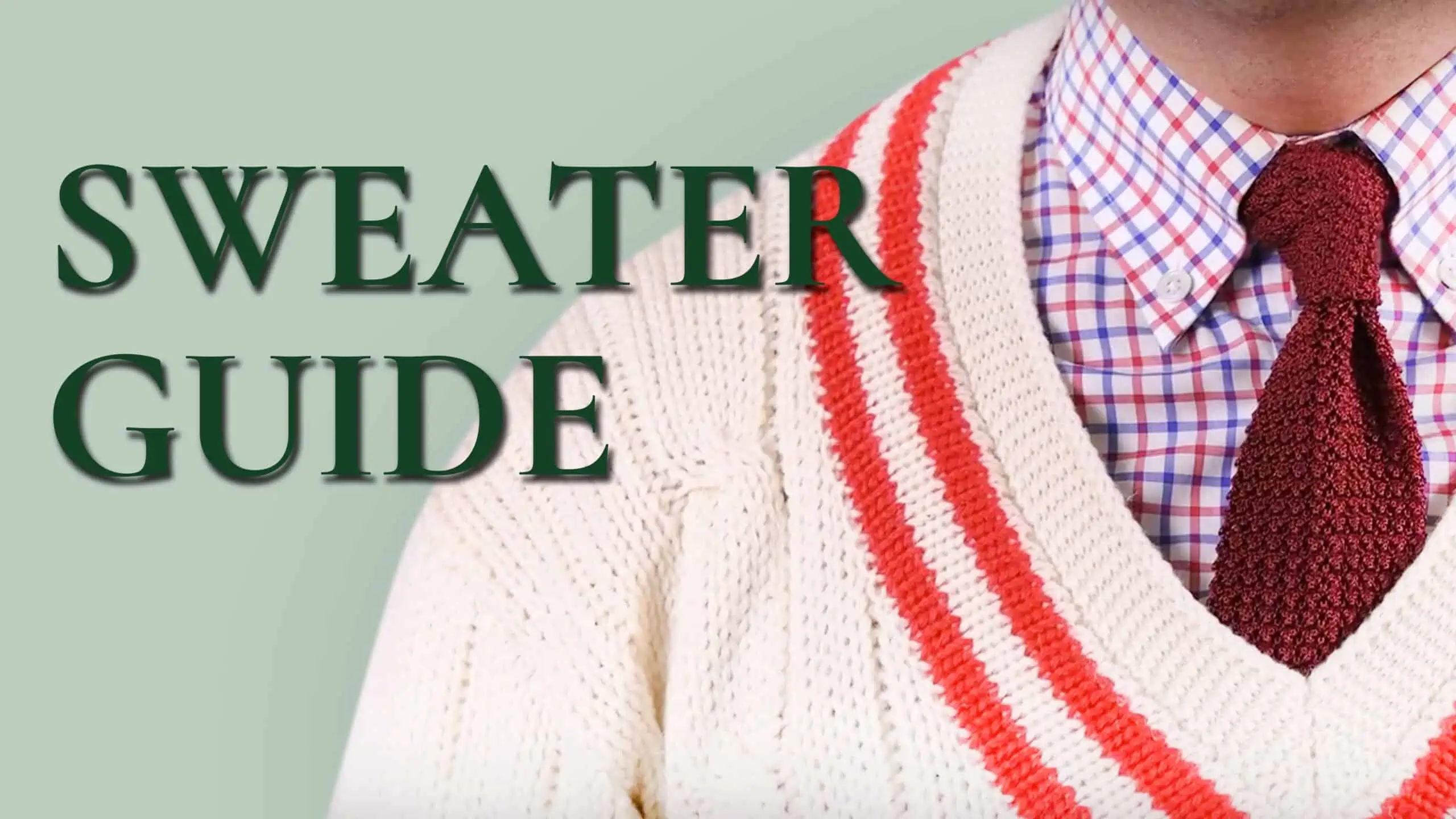
Thank you, Very informative.
You are welcome, Chris!
There’s a yak hair craze going on right now. Any comments about this material?
I remember hearing a story that the design on Aran jumper was unique to that islander, meaning if they died at sea and the body washed up it could be identified. I’m not quite sure how true this is but it interested me.
Another very thorough treatment of an important wardrobe item.
When I was a civilian working at sea with the Royal Navy many years ago, one of the chiefs gave me an extra submariner’s turtleneck he had from his days in H.M. submarines. It was heavy, tightly knit wool which seemed to literally shed water. If it was worn on other than a very cold, damp day it became a furnace. I let the Love of My Life for 1971 borrow it and never saw it again.
Most of my sweaters are from Brooks and Lands End in different styles, and I’ve had a wool Puritan V-neck (“Made in USA”) for ages which never pills. Still looks great.
Okay, I’ll admit it. I wear a white t-shirt under a v-neck sweater, even though the article said not to.
I agree with your choice. I like the look!
Couldn’t find that black cardigan in the “Inis Meain Sweater” pic on their site… any ideas?
I have various styles of sweaters. The brands are Brooks Brothers, J. Press, Barbour, and Filson. My favorites are a Barbour crew neck, with leather epaulettes, and elbow patches, with the second being a Filson Cardigan.
Hello. Such a highly anticipated and informative article should not be plagued by such grammatical and typographic errors.
There are typographical errors but they do not retract from the article’s content. Given the quality and frequency of material, we should be thankful, not critical.
A bit harsh. Be grateful for the quality, free content.
Lots of amazing sweater options – this will help me buy for my husband … thanks!
Glad we could help!
Hello, I wanted to learn more about cricket sweaters and their style and also in wich brand can I find them .
Thank you and have a nice day ..
Révan
During my college days in the late 60’s, my Mother lovingly hand knitted me a fabulous cable-knit tennis sweater. I mourn for the loss of BOTH. Great ‘stuff’ you folks send my way. I always take a break to read.